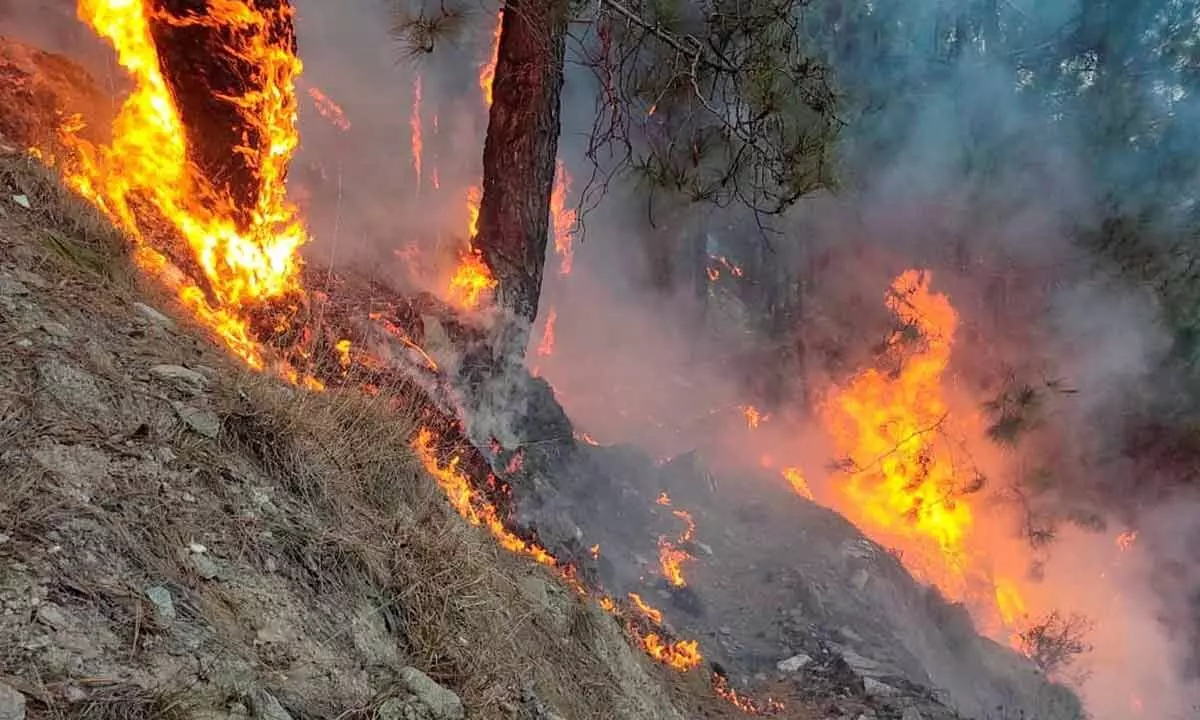Wild fires posing threat to animals in Jharkhand
In a bid to pave way for Mahua flower collection, villagers often set dry leaves on fire in forests. This is being practised by them even after awareness campaigns are conducted. The number of forest fires is on the higher side with a prolonged dry season this year -- NK Singh, Conservator of Forest
image for illustrative purpose

Ranchi: Raging forest fires in Jharkhand that wilted under the scorching sun for the last few weeks are posing a threat to wildlife as these bushfires are shrinking animal habitats and causing food scarcity, experts here said Sunday.
Altogether, 120 fire points were recorded only on Saturday in the forests of Garhwa, Palamu, Latehar, Chatra, Hazaribag, Ranchi and West Singhbhum districts, according to data obtained from the fire alert system, an official said. "Several endangered reptiles were reported charred in forests of Parasnath Hills in Giridih and Palamau Tiger Reserve in the last 30 days. The raging fire is destroying the ecosystem of forests, shrinking animal habitats and disrupting the food chain," former State wildlife board member DS Srivastava told PTI. Wild animals and birds are migrating from their habitats to other places for safety.
"A large number of animals have migrated from the north division to the southern part of the Palamau Tiger Reserve, as the number of fire incidents is higher in the north," PTR Deputy Director (buffer area) Mukesh Kumar told PTI. Most parts of Jharkhand are sizzling with temperatures hovering over 40 degrees Celsius for more than a week and incidents of fire are reported from every major forest and wildlife sanctuary of the State, the officials said. Usually, forest fires are detected between February 15 and mid-June in the state. Jharkhand has so far recorded 7,456 fire points from February 15 this year as per the Forest Survey of India data, another official said, adding that the State witnessed the decade's lowest rainfall in March.
Weather department officials said there will be hardly any change in maximum temperature in the next two-three days.
"Prolonged dry weather with high temperature, practice of Mahua flower collection by villagers and people's negligence" are considered major reasons behind the forest fires in the mineral-rich State. Additional Principal Chief Conservator of Forest NK Singh told PTI that "most forest fires are man-made".
"In a bid to pave way for Mahua flower collection, villagers often set dry leaves on fire in forests. This is being practised by them even after awareness campaigns are conducted. The number of forest fires is on the higher side with a prolonged dry season this year," he said. Singh said the forest department is currently facing several challenges, including a "lack of human resources and shortage of funds for fire fighting management". The state forest department usually spends Rs three crore annually to deal with forest fires.
"Around Rs 1.3 crore could be utilised this year as we could not withdraw the entire allotted funds due to some technical snags. Firefighters are working round the clock," he said. Notably, four personnel were critically injured when they were working to douse a massive fire that broke out in Bigha forest in Hazaribag district on Saturday.
A geographic information system cell has been set up at the state forest department for dissemination of fire incidents to the respective divisional officers, the official said. Citizens' groups have also come up to protect forests from raging fires in some places. For instance, Parasnath Makar Sankranti Mela Samiti, a citizens' group of 50 volunteers, has been working on dousing a fire in Parasnath wildlife sanctuary in Giridih district for the past one month.

